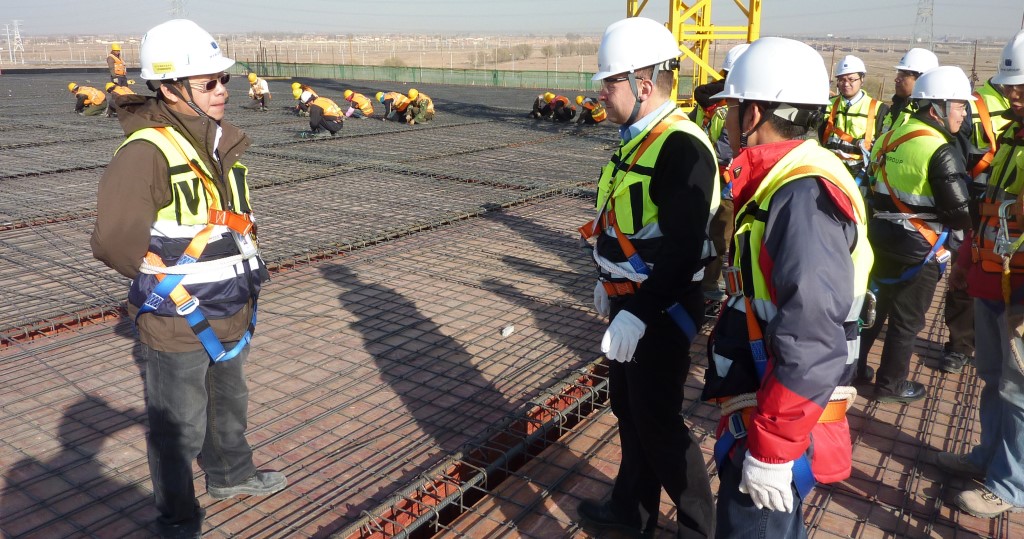A JHSC plays an important role in your workplace. Learn more by clicking on the following sections.
- What Is a JHSC?
- JHSC Requirements in Ontario
- Workplaces that Must Have a Joint Health and Safety Committee
- Why Workplaces Benefit from a JHSC
- JHSC Training Requirements
- ACUTE’s JHSC Courses You Can Take
If you are looking for CPO-approved joint health and safety training, contact us.

JHSC’s play a key role in the health and safety of your workplace
JHSC – What You Need to Know
1. What Is a JHSC?
JHSC stands for Joint Health and Safety Committee. This committee is made up of both workers and representatives from employers. The members need to be mutually committed to making improvements to the health and safety conditions in your workplace. Together they identify potential health and safety issues in the workplace and bring those issues to the attention of the employer.
The main responsibilities of a joint health and safety committee include:
- Performing regular inspections of your workplace (at least once a month).
- Identifying potential and actual workplace hazards.
- Getting information from your employer that relates to health and safety in your workplace.
- Recommending health and safety improvements in your workplace.
- Being consulted about any health and safety-related testing in your workplace.
- Having a member representing workers present at the beginning of any health and safety-related testing in your workplace.

Joint health and safety committees are made up of both employers and employees
2. JHSC Requirements in Ontario
The Occupational Health and Safety Act outlines the legal requirements for ensuring health and safety in workplaces in Ontario. The Act includes details about the following:
- Rights and duties of all parties in the workplace.
- Procedures for dealing with workplace hazards.
- Enforcement of the law when complying with the law has not to be done voluntarily.
In 1990, the Act evolved, reinforcing the Internal Responsibility System (IRS). The development of joint health and safety committees was an important part of this evolution. Both workers and employers have a responsibility for promoting health and safety in their workplace and as such a JHSC plays an important role in seeing this fulfilled.

Both workers and employers have a responsibility for promoting health and safety in the workplace
3. Workplaces that Must Have a Joint Health and Safety Committee
The requirements for joint health and safety committees vary depending on your type of workplace and the number of regular employees that you have.
Requirements according to your type of workplace
If your workplace meets any of the following conditions, then you are required by law to have a joint health and safety committee:
- You regularly employ 20 or more workers (You do not include workers who take part in community participation [workfare] under Ontario Works Act in your count).
- You have a construction project with 20 or more workers that are going to last 3 months or more.
- Your workplace has a designated substances regulation that applies to it, even if you are regularly employing less than 20 workers.
- Your workplace has a Director’s order issued to it under section 33 of the Ontario Works Act, even if you are regularly employing less than 20 workers.
- Your workplace or construction project has been ordered by the Ministry of Labour, Immigration, Training and Skills Development to establish a JHSC committee.
- You have a farming operation that regularly employs 20 or more workers who have duties related to mushroom, greenhouse, dairy, hog, cattle, or poultry farming.
Requirements according to the number of employees at your workplace
1 to 5 Regular Employees:
You do not need to have a JHSC. However, if you have a designated substance regulation that applies to your workplace, then you are required to have one.
6 to 19 Regular Employees:
You need to have one health and safety representative that has been selected by the workers that they are representing. If you have a designated substance regulation that applies to your workplace, then you are required to have a joint health and safety committee.
20 to 49 Regular Employees:
If your workplace has less than 50 workers regularly employed, then you need to have a minimum of 2 members. One member represents workers and the other from the employer.
More than 50 Regular Employees:
If your workplace has more than 50 regularly employed workers, then you need to have a JHSC that is composed of at least 4 members.

You need a JHSC if you regularly employ more than 20 people
4. Why Workplaces Benefit from a JHSC
Joint health and safety committees are very beneficial to workplaces. Because they are a cooperative effort between both workers and employers, they can better ensure that every possible effort is being done to “identify and eliminate, or mitigate workplace health and safety hazards.”
Joint health and safety committees can provide your workplace with better protection against:
- Workplace injuries
- Workplace illnesses
- Workplace-related deaths
They can be a key factor in you having a “well-functioning workplace internal responsibility system“.

Joint health and safety committees have many benefits for your workplace
5. JHSC Training Requirements
According to the Occupational Health and Safety Act (OHSA), at least two members of your joint health and safety committee (one representing workers and one representing persons who exercise managerial functions) need to be certified.
To get certified you need to complete Part 1 and Part 2 of mandatory Joint Health and Safety Training.
You need to take your training from a joint health and safety training provider that has been approved by the Chief Prevention Officer. Once you have successfully completed all parts of an approved JHSC training program, you will be eligible to be certified by the Chief Prevention Officer.
You are also required to take refresher training every three years in order to maintain your certification. If you are a certified member, you may request a one-time exemption from taking Refresher Training. You need to be an active member, meaning you have been engaged as a member of your workplace JHSC during the last 12 months, in order to qualify for an exemption.

You need to take JHSC refresher training every 3 years
6. ACUTE’s JHSC Courses You Can Take
Part 1 Certification Basic Training for Joint Health and Safety Committee Members
This certification involves training in health and safety law, as well as the identification, assessment, and control of hazards. Standards for this training are set by the Ministry of Labour, Immigration, Training and Skills Development and the ministry also certifies JHSC members who complete approved training programs.

Joint Health and Safety Committee Part 2
A Joint Health and Safety Committees (JHSC) is a committee of at least two persons, who represent the workers and the employer at a workplace. Their primary role is to identify workplace health and safety problems and bring them to the attention of the employer. This certification (Part 1 and 2) involves training in health and safety law, and the identification, assessment, and control of hazards.

Joint Health and Safety Committee Refresher
The JHSC Refresher is a one day course that reviews the concepts learned in Part 1 and Part 2 of the JHSC Certification process and updates participants on changes to the Act, Regulations and relevant health and safety standards. It also provides opportunities for learners to share JHSC best practices, and to discuss JHSC challenges and potential resolutions.

Stay Safe at Work With ACUTE!
Hands-on, practical training is the best way to keep employers and workers safe in the workplace! ACUTE is dedicated to workplace safety and understands the importance of course and training provider approval. Why get workplace safety training with ACUTE? Here are just some of the benefits of working with ACUTE.
- Open Door Instructor-Student Partnership – ACUTE’s training services emphasize client participation. Staff foster relationships with clients and serve as a touchstone for advice anytime moving forward.
- Serving Your Team and Industry – With a vast array of clients in manufacturing, construction, health, academic, and government sectors, ACUTE brings the best safety practices from across the spectrum to your workplace.
- 100 Years Combined Experience – ACUTE provides comprehensive health and safety training, on-site safety services, and consulting services. With over 100 years of combined experience, our company staff offers more than theoretical or abstract ideas. ACUTE offers solutions.
- Track Record of Success – ACUTE has rated 4.9/5 stars on Google reviews, demonstrating a commitment to our clients, quality, and passion for training.

Hours of Operation
Monday – Friday: 8:00am-5:00pm
Saturday – Sunday: Closed


